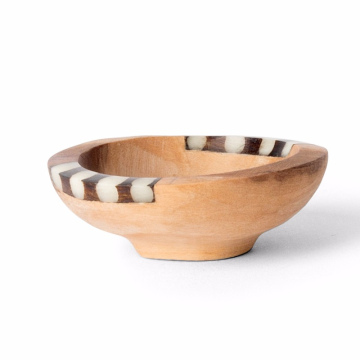Historical Context of Royal Weddings in Spain
The history of royal weddings in Spain is deeply intertwined with the nation’s political landscape, serving as both celebrations of union and pivotal moments in political alliance formation. From the Middle Ages, these ceremonies have been significant, often reflecting the dynamics of power, territorial control, and familial bonds between different kingdoms. The Catholic Monarchs, Isabella I of Castile and Ferdinand II of Aragon, exemplify this connection. Their marriage in 1469 was not just a romantic union; it marked the beginning of the unification of Spain and laid the groundwork for the vast Spanish Empire.
Throughout the Renaissance, royal weddings continued to serve as instruments for political maneuvering. The 1554 marriage between Philip II of Spain and Mary I of England reflected attempts to strengthen Catholic alliances against Protestant movements in Europe. Such unions highlight the role of royal weddings as mechanisms to secure peace and consolidate power among nations. Each matrimonial contract had far-reaching implications, often impacting national identity and political stability.
As Spain moved into the 19th and 20th centuries, the function and formality of royal weddings evolved. The wedding of King Alfonso XIII to Princess Victoria Eugenie of Battenberg in 1906 showcased the modernizing trends of the era while simultaneously honoring traditional customs. This ceremony was marked by both grandeur and a series of tragic events, indicative of the turbulent socio-political changes Spain would face in the decades to come.
The royal weddings of contemporary Spain reflect a blend of historical tradition and modernity. Events such as the 2004 marriage of King Felipe VI and Letizia Ortiz not only underscore an enduring royal narrative but also illustrate the monarchy’s role in shaping contemporary Spanish society. In the broader scope of history, these weddings encapsulate the intersections of tradition, politics, and national identity, echoing the enduring significance of royal unions within Spanish culture.
Key Elements of a Spanish Royal Wedding
Spanish royal weddings are grand celebrations that embody both tradition and the deep-rooted cultural heritage of Spain. These weddings typically take place in historically significant venues, such as majestic cathedrals or royal palaces, which provide an opulent backdrop for the ceremony. The choice of location not only reflects the couple's personal style but also highlights the historical and national significance associated with the Spanish royal family.
One of the standout features of these ceremonies is the ceremonial attire, often flaunting intricate designs that pay homage to royal traditions. The bridal gown is usually a stunning piece, traditionally handmade, featuring elements that symbolize the virtues of the bride, such as purity and fidelity. Meanwhile, the groom often dresses in military uniform or an elegant suit, signaling his status within the royal hierarchy. The fashion choices are not solely personal; they often carry symbolic messages, reinforcing the couple's connection to their lineage and the Spanish culture.
Significant rituals mark the progression of the ceremony, with the exchange of vows being the focal point. This sacred moment is complemented by the exchange of wedding rings, which symbolize eternal love and unity. The bridal bouquet also plays a pivotal role, often comprising flowers that convey specific meanings—such as orange blossoms, which represent fertility and happiness. These elements not only enhance the ceremonial atmosphere but also connect the couple and their families to centuries of tradition.
The Spanish royal family and government officials frequently participate in these grand celebrations, showcasing the intertwining of monarchy and state. Their presence garners national attention and media coverage, contributing to public perception and interest. As a result, Spanish royal weddings are not merely personal celebrations; they encapsulate the essence of tradition, power, and national pride, inviting the public to share in the momentous occasion.
Contemporary Royal Weddings: Highlights and Trends
In recent years, Spanish royal weddings have become emblematic of a dynamic blend of tradition and modernity, reflecting broader societal changes. The wedding of King Felipe VI and Queen Letizia in 2004 stands as a defining moment in the landscape of contemporary royal ceremonies in Spain. Their union, characterized by a tasteful balance of heritage and personal style, set the stage for subsequent royal weddings that have captivated both national and international audiences. The event not only celebrated their love but also showcased the confluence of regal traditions and modern sensibilities, marking a significant shift in the perception of monarchy in Spain.
One remarkable trend observed in these recent nuptials is the increasing incorporation of global influences into the celebration of Spanish royal weddings. For instance, the wedding of Princess Eugenia of York drew inspiration from various cultures, which was reflected in the attire and ceremonial practices. This global outlook not only appeals to a diversified audience but also signifies the monarchy’s adaptability and relevance in a changing world. Furthermore, the aesthetic choices made in these ceremonies often reflect the personalities of the individuals involved, making each wedding uniquely theirs while still maintaining essential royal traditions.
In addition to evolving styles, public engagement has also transformed in contemporary royal weddings. Events such as the televised ceremonies and public celebrations allow citizens to participate in these historic moments, forging a connection between the monarchy and the populace. The use of social media has allowed royal families to share their joy with wider audiences, facilitating a more conversational relationship with admirers. These platforms have amplified the significance of royal weddings, transforming them from exclusive events into community-wide celebrations. Such changes underscore the modern royal family's commitment to accessibility and innovation, ultimately reshaping the royal wedding narrative in Spain.
The Impact of Royal Weddings on Spanish Society and Culture
Royal weddings in Spain have consistently served as significant markers of cultural heritage and national identity. These events not only embody the rich traditions associated with the Spanish monarchy but also act as catalysts for national pride. The celebrations surrounding royal marriages often attract substantial media attention, creating a sense of unity among citizens as they partake in watching the ceremonies. Such collective experiences enhance societal cohesion, fostering a nationalistic spirit that resonates deeply throughout the country.
Moreover, royal weddings often reinforce centuries-old cultural traditions. The inclusion of various ceremonial practices, such as the Torres wedding in 2004, showcases Spain's vibrant heritage, drawing upon historical customs that enrich the monarchy’s narrative. These nuptial celebrations often feature traditional attire, music, and rituals that remind the populace of their shared cultural lineage. Consequently, each royal wedding acts as an educational moment for younger generations, ensuring that these traditions are preserved and cherished over time.
In addition to fostering cultural identity, royal weddings generate significant economic benefits for the nation. The influx of tourists eager to witness or participate in these events stimulates local economies, particularly in cities like Madrid and Barcelona, which become focal points of international interest. Hotels, restaurants, and local businesses report increased revenues, showcasing how royal events can be transformed into substantial economic opportunities. Media coverage of royal weddings further broadens their impact, as broadcasts reach audiences worldwide, elevating Spain's profile as a destination steeped in history and elegance.
Ultimately, the societal reactions and participation in royal weddings are indicative of shifts in public opinion toward the monarchy. Citizens’ engagement with these occasions reflects both their appreciation for tradition and their desire for a modern royal family that embodies contemporary values. As Spain navigates a rapidly changing cultural landscape, royal weddings stand as vital events that shape public perception of the monarchy, solidifying its relevance in the 21st century.








